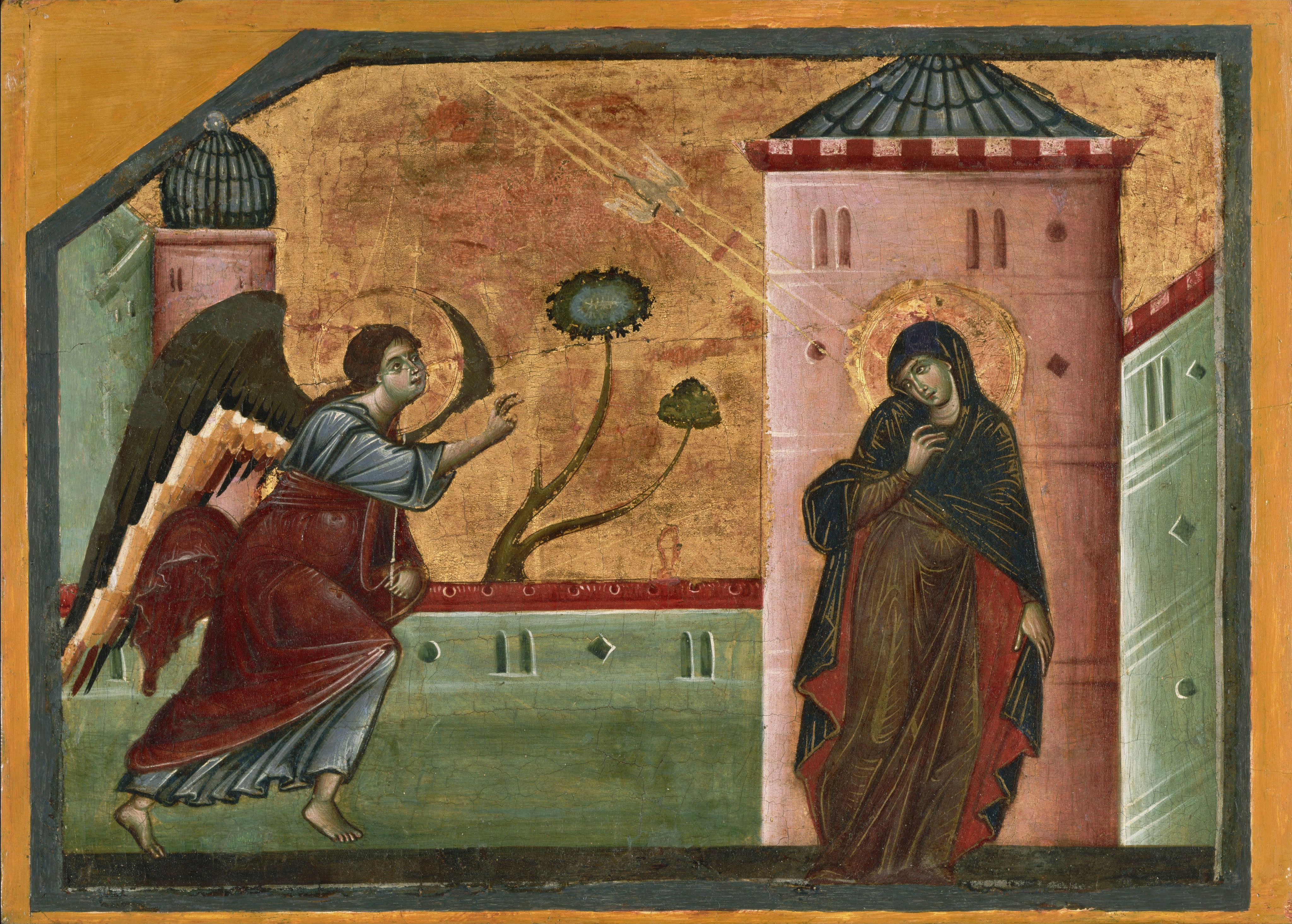According to the website of the Princeton University Museum of Art (emphases by me!):
Scholars attribute this Annunciation and eleven related scenes of the Nativity and Passion of Christ to Guido da Siena. Along with a central panel, they formed an altarpiece that was later dismantled. Together in Badia Ardegna in the nineteenth century, the panels are now in museums in Altenburg, Paris, Siena, Utrecht, and Princeton. The Annunciation came from the upper-left corner of the altarpiece. The Virgin stands in an enclosed garden near a tower—symbols of her purity taken from the Song of Songs. As the archangel Gabriel rushes toward her in an unusual running pose, she shrinks back in fear. In 1999, frescoes made around the same time, including an Annunciation closely related to the Princeton panel, were found in the crypt of the Siena Cathedral. This discovery supports the hypothesis that the panels from Badia Ardegna were originally part of an altarpiece made for the high altar of the cathedral.
 |
| Annunciation, Guido da Siena; Princeton University Museum of Art Image from Wikimedia Commons |
No comments:
Post a Comment